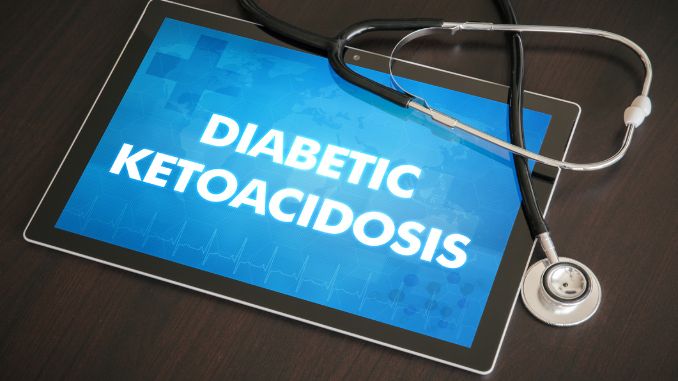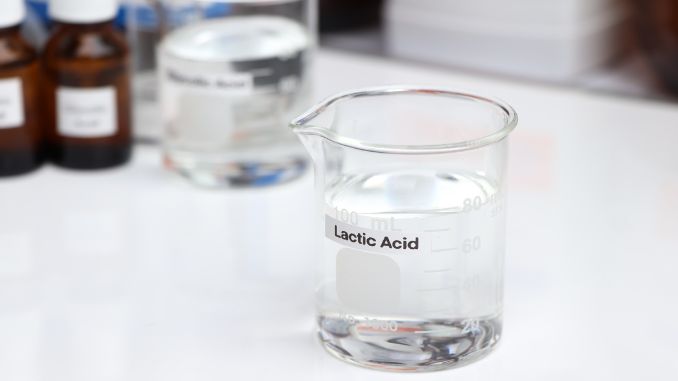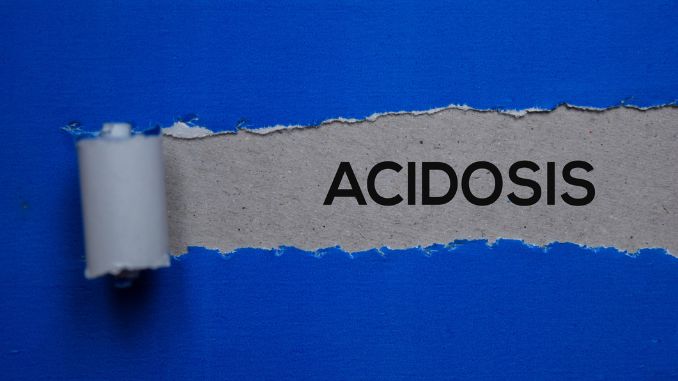What causes acid in the blood and how does it impact overall health? When your blood becomes too acidic, it can throw your entire body off balance. This condition, known as metabolic acidosis, can lead to serious health issues if left untreated.
Severe metabolic acidosis is rare and usually caused by underlying medical conditions and can lead to serious complications such as shock or death if not treated promptly. But what exactly causes acid in the blood, and who is most at risk? Let’s break it down.
Understanding Acidosis
Acidosis occurs when the body’s blood pH level drops below 7.35. This imbalance can arise when the body produces too much acid or when the kidneys fail to remove enough acid from the blood. Various factors may lead to this condition, such as kidney disease, diabetes, and specific medications.
When the blood pH [1] level becomes too acidic, it can lead to a range of symptoms, such as fatigue, weakness, and shortness of breath. In severe cases, acidosis can result in more serious complications, including organ damage and even death.
What Causes Metabolic Acidosis?

1. Metabolic Acidosis: It happens when the body either produces too much acid, can’t eliminate acid properly, or loses too much bicarbonate (a substance that helps neutralize acid). The most common causes include:
- Diabetic ketoacidosis
- Lactic acidosis
- Renal failure
- Severe dehydration
2. Ethylene glycol: Found in antifreeze, is a rare cause of high anion gap metabolic acidosis [2], usually due to poisoning. It produces toxic substances in the body that can lead to severe complications like kidney failure. Early treatment with specific antidotes is critical to prevent serious outcomes.
3. Hyperchloremic acidosis: a type of metabolic acidosis with a normal anion gap. It is often related to conditions such as severe diarrhea and renal tubular acidosis. This occurs due to an increase in chloride ions to maintain electrical neutrality in the absence of bicarbonate loss.
According to nephrologist Professor Dr. Nilufar Mohebbi, research suggests that metabolic acidosis is linked to the progression of chronic kidney disease (CKD). Emerging evidence indicates that bicarbonate treatment may help slow CKD progression and reduce the risk of kidney failure.
Types of Acidosis

1. Metabolic Acidosis
This occurs when the body produces too much acid or when the kidneys are unable to remove enough acid from the blood. Conditions like diabetic ketoacidosis [3] and renal tubular acidosis fall under this category.
2. Respiratory acidosis
Occurs when the lungs are unable to remove enough carbon dioxide from the blood, leading to a buildup of acid. Conditions such as obstructive sleep apnea, hypoventilation syndromes, and chronic obstructive pulmonary disease (COPD) are common causes.
3. Diabetic Ketoacidosis (DKA)
When the body doesn’t have enough insulin, it starts breaking down fat for energy. This releases acidic compounds called ketones into the blood. DKA is common in people with uncontrolled diabetes.
4. Lactic Acidosis
Excessive lactic acid buildup in the body can lead to metabolic acidosis. This occurs when the body generates lactic acid [4] during anaerobic metabolism, a process triggered by a lack of oxygen in the tissues. This may occur due to:
- Intense exercise (temporary effect)
- Severe infections (sepsis)
- Heart failure or shock (lack of oxygen to tissues)
Who Is at Risk for Metabolic Acidosis?

Certain groups of people are more prone to developing metabolic acidosis. Here are the top risk factors:
- People with diabetes (especially Type 1)
- Individuals with kidney disease
- Those who consume excessive alcohol
- People with chronic lung disease (impaired oxygen levels)
- Anyone with severe dehydration (vomiting, diarrhea, or excessive sweating)
- People taking certain medications (aspirin, diuretics, or metformin in kidney-impaired patients)
According to Dr. Richard Johnson, a nephrologist at the National Kidney Foundation, early symptoms of metabolic acidosis are often overlooked:
“Many patients feel fatigued, experience rapid breathing, or have persistent nausea. Recognizing these signs early is crucial for preventing complications.”
Diagnosing Acidosis

Diagnosing metabolic acidosis typically involves a combination of physical examination, medical history, and laboratory tests. A healthcare provider may start with a physical examination to look for signs of acidosis, such as rapid breathing or confusion.
They will also inquire about the patient’s medical history, including any underlying conditions or medications that might be contributing to the acidosis.
Laboratory tests are crucial in diagnosing acidosis. Blood tests can measure the blood pH level and identify any underlying conditions that causes acid in the blood.
A blood gas analysis is often performed to measure the levels of oxygen and carbon dioxide in the blood, as well as the blood pH level.
This test provides a comprehensive view of the acid-base balance in the body. Additional tests, such as a complete blood count (CBC) or a basic metabolic panel (BMP), may be ordered to check for other contributing factors.
These diagnostic steps are essential for accurately identifying the type and cause of acidosis, allowing for effective treatment.
How to Restore Balance and Prevent Metabolic Acidosis?

Proper management of metabolic acidosis requires more than treating the symptoms—it demands a focus on the root causes.
Chronic conditions such as diabetes, kidney disease, and other metabolic disorders are often at the heart of persistent acidosis. Left unaddressed, these underlying issues can worsen and lead to severe complications.
Sodium bicarbonate, commonly known as baking soda, is often used to treat metabolic acidosis. It functions by neutralizing stomach acid and increasing the blood’s pH level.
This is particularly effective in cases where acidosis is caused by the loss of bicarbonate, such as during diarrhea.
Studies have shown that sodium bicarbonate can improve kidney function and aid in the overall recovery from metabolic acidosis.
However, metabolic acidosis can be managed and even prevented with the right steps. Here’s how:
- Stay Hydrated: Water helps flush out excess acid through urine. Aim for at least 8 glasses per day.
- Eat an Alkaline Diet: Balance your blood pH naturally by eating more:
- Leafy greens (spinach, kale)
- Fruits (bananas, avocados)
- Nuts & seeds
- Low-fat dairy
- Reduce acidic foods like processed meats, sugar, soda, and excessive protein.
- Manage Blood Sugar Levels: If you have diabetes, monitor your blood sugar regularly to prevent ketoacidosis.
- Support Kidney Health: Avoid excess salt, processed foods, and NSAIDs (like ibuprofen) to reduce kidney strain.
- Tummy: While exercise is great, overtraining can cause lactic acid buildup. Give your body time to recover.
The Role of Lactic Acid

Lactic acid is a type of acid produced by the body during anaerobic metabolism, which occurs when the body cannot use oxygen to generate energy. This process is common during intense exercise or in certain medical conditions.
When lactic acid builds up in the blood and tissues, it causes acid in the blood, leading to symptoms such as fatigue, weakness, and shortness of breath.
Lactic acidosis is a specific type of acidosis that occurs when the body produces too much lactic acid.
This can result from intense physical activity, severe infections, or medical conditions like diabetes and kidney disease. Certain medications, such as metformin used for type 2 diabetes, can also contribute to lactic acidosis.
Treating lactic acidosis involves addressing the underlying cause. This may include stopping medications that contribute to the condition, treating any underlying medical issues, and providing supportive care like oxygen therapy and hydration.
In severe cases, hospitalization may be necessary for close monitoring and treatment.
Understanding the role of lactic acid and its impact on the body is crucial for managing and preventing lactic acidosis effectively.
Conclusion
Acidic blood, or metabolic acidosis, is more common than you think. But by understanding its causes and risk factors, you can take action to restore balance naturally.
If you have underlying conditions like diabetes or kidney disease, regular check-ups are essential.
Listen to your body—fatigue, rapid breathing, or unexplained nausea could be warning signs. Take steps today to support a healthy, balanced pH and protect your long-term health.
Start your journey to better health with our Yoga For Healthy Blood Sugar program. Check out our program now and manage your blood sugar levels naturally to prevent metabolic acidosis.

FAQ’s
How do I know if my body is too acidic?
What causes acid in the blood can contribute to various symptoms. Symptoms may include fatigue, headaches, acid reflux, muscle weakness, joint pain, and frequent infections. A urine or saliva pH test can help determine acidity levels.
How to make blood less acidic?
Your body naturally regulates blood pH, but eating more alkaline foods (vegetables, fruits, nuts), staying hydrated, reducing processed foods, and managinfoog stress can support balance.
How do I stop my body from being acidic?
Eat a balanced diet with more alkaline foods, drink enough water, reduce sugar and processed foods, manage stress, and exercise regularly.
Is coffee acidic?
Yes, coffee is acidic and can contribute to acid reflux or stomach discomfort, especially if consumed in excess and it may irritate the stomach but does not influence blood pH.
Can hot water reduce acidity?
Yes, drinking warm water, especially with lemon or herbal teas, can help neutralize stomach acid and aid digestion.

Rick Kaselj MS, is a leading kinesiologist and injury specialist as well as co-creator of the best-selling Unlock Your Hip Flexors program. Rick creates exercise programs that help people heal injuries and eliminate pain, so they can go back to living a full, active, healthy life.



